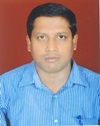Advanced Characterization Techniques
Course Attendees
Still no participant
Course Reviews
Still no reviews
Course Name: Advanced Characterization Techniques
Code(Credit) :CUTM1402(3-1-0)
Course Objectives
- The objective of the subject is that the student acquires knowledge of the different existing experimental techniques for the microstructural and physicochemical characterizations of materials.
- Students gain knowledge about the principles of various techniques.
Learning Outcomes
Upon successful completion of this course, students will be able to address following points:
- Depending on the problem or needs of each case, the student must have sufficient criteria to select the most appropriate technique, as well as the interpretation of their results.
- The knowledge gained from this subject definitely help students to optimize material research.
Course Syllabus
Module-I
Compositional and Structural Characterization
Principle of X-ray diffraction (XRD), Importance of Rietveld refinement in XRD (fundamental), Lattice parameters, Structure analysis, Phase identification, Crystallite size analysis using Scherrer's formula, X-ray photoelectron spectroscopy (XPS), X-ray fluorescence (XRF), Energy dispersive X-ray analysis (EDAX).
Practice-1
Crystal structure and phase identification determination by XRD (Biovia MS and phase identification by using relevant software)
Practice-2
Study on molecular spectroscopy by fluorescence instrument
Module-II
Advanced Microscopy Techniques for Nanomaterials
Field emission scanning electron microscope (FESEM), Atomic force microscopy (AFM), Scanning tunneling microscopy (STM), Transmission electron microscopy (TEM), High-resolution transmission electron microscopy (HRTEM).
Module-III
Spectroscopic Techniques
Ultraviolet-visible spectroscopy, Photo-luminescence spectroscopy, Fourier transform infrared (FTIR) spectroscopy, Raman spectroscopy, Nuclear magnetic resonance (NMR).
Practice-3
Familiarization with the ultraviolet-visible absorption spectroscopy
Practice-4
Band gap calculation from photo-luminescence spectra
Module-IV
Nanomaterials Electrical and Magnetic Characterization Techniques
Measurement of resistivity by 4-probe method, Hall measurement, Measurement of magnetic of properties of nanomaterial (Magnetic hysteresis and dielectric properties by LCR meter),Vibrating sample magnetometer.
Module-V
Mechanical Characterization Techniques
Elastic and plastic deformation-mechanical properties of materials, models for interpretation of nanoindentation load-displacement curves, Nanoindentation data analysis methods-Hardness testing of thin films and coatings, Mechanical properties evaluation by universal testing machine (UTM), Dynamic mechanical analysis.
Practice-5
Evaluation of mechanical properties of material by nanoindentation technique
Practice-6
Measurement of tensile strength of material by UTM
Module-VI
Physical and Optical Characterizations of Nanostructured Materials
Introduction to particle size characterization, Zeta potential measurement – Particle size analysis, specific surface area by BET analysis, Photoconductivity.
Module-VII
Thermal and Electrochemical Characterization
Differential scanning calorimeter (DSC), Differential thermal analyzer (DTA), Thermogravimetric analysis (TGA), Electrochemical analysis (Charging-discharging cyclic voltammetry).
Reference Books:
1. ASM Handbook: Materials Characterization, ASM International, 2008.
2. Yang Leng: Materials Characterization-Introduction to Microscopic and Spectroscopic Methods, John Wiley & Sons (Asia) Pte Ltd., 2008.
3. Robert F. Speyer: Thermal Analysis of Materials, Marcel Dekker Inc., New York, 1994.
4. Nanotechnology-Basic Science and Emerging Technologies, Mick Wilson, Kamali Kannangra Geoff Smith, Michelle Simons and Burkhard Raguse, Overseas Press.
Session Plan
Session 1
Principle of X-ray diffraction (XRD), Importance of Rietveld refinement in XRD (fundamental), Lattice parameters, Structure analysis, Phase identification, Crystallite size analysis using Scherrer's formula
https://www.youtube.com/watch?v=IsaTx5-KLT8
https://www.youtube.com/watch?v=C1cYJthlBZY
https://slideplayer.com/slide/3866732/
http://profex.doebelin.org/wp-content/uploads/2015/02/Lesson-1-XRD-and-Rietveld-Refinement.pdf
Session 2
Practice-1 (2 hours)
Crystal structure and phase identification determination by XRD (Biovia MS and phase identification by using relevant software)
Session 3
X-ray photoelectron spectroscopy (XPS)
https://www.youtube.com/watch?v=8njmZdnvjZs
https://www.slideshare.net/researcher1234/xps-x-ray-photoelectron-spectroscopy
Session 4
X-ray fluorescence (XRF), Energy dispersive X-ray analysis (EDAX)
https://www.youtube.com/watch?v=pcPaRXSMFW8
Session 5
Practice-2 (2 hours)
Study on molecular spectroscopy by fluorescence instrument
Session 6
Field emission scanning electron microscope (FESEM)
https://www.youtube.com/watch?v=U-oVH2F4A4s
https://www.slideshare.net/HimanshuDixit7/scanning-electron-microscope-sem-89002769
Session 7
Session 8
Scanning tunneling microscopy (STM)
https://www.slideshare.net/HilalAybikeCAN/scanning-tunneling-microscope-75317950
Session 9
Transmission electron microscopy (TEM)
https://www.youtube.com/watch?v=fQJYuTpK8Fs
https://www.slideshare.net/JessaArio/transmission-electron-microscopy-14047650
Session 10
High-resolution transmission electron microscopy (HRTEM)
https://www.youtube.com/watch?v=ZckTnA0Dc40
https://www.slideserve.com/lan/high-resolution-transmission-electron-microscopy-hrtem
Session 11
Ultraviolet-visible spectroscopy
https://www.slideshare.net/Santachem/uv-visible-spectroscopy
Session 12
Practice-3 (2 hours)
Familiarization with the ultraviolet-visible absorption spectroscopy
Session 13
Photo-luminescence spectroscopy
https://www.youtube.com/watch?v=q1_u2aFMbv4
https://www.slideshare.net/BASANTKUMAR123/photo-luminescence-126165625
Session 14
Practice-4 (2 hours)
Band gap calculation from photo-luminescence spectra
https://www.youtube.com/watch?v=GqivfoW32rg&feature=youtu.be
Session 15
Fourier transform infrared (FTIR) spectroscopy
https://www.youtube.com/watch?v=r18Gi8lSkfM
https://www.youtube.com/watch?v=0S_bt3JI150
https://www.slideshare.net/GamalAbdulHamid/fourier-transform-infrared-spectroscopy-ftir
Session 16
Raman spectroscopy techniques
https://www.youtube.com/watch?v=SsIYDEma_cU
https://www.slideshare.net/BhaumikBavishi/raman-spectroscopy-54641528
Session 17
Nuclear magnetic resonance (NMR)
https://www.youtube.com/watch?v=ywR6aLpfjl0
https://www.slideshare.net/solairajananant/nmr-spectroscopy-13887430
Session 19
Session 20
Measurement of magnetic of properties of nanomaterial (Magnetic hysteresis and Dielectric properties by LCR meter)
Session 22
Elastic and plastic deformation-mechanical properties of materials
https://www.slideshare.net/PraveenVaidya1/introduction-to-elasticity-of-materials
Session 23
Models for interpretation of Nanoindentation load-displacement curves
Session 24
Nanoindentation data analysis methods-Hardness testing of thin films and coatings
Session 25
Practice-5 (2 hours)
Evaluation of mechanical properties of material by nanoindentation technique
Session 26
Mechanical properties evaluation by universal testing machine (UTM)
Session 27
Practice-6 (2 hours)
Mechanical properties evaluation by UTM
Session 28
Session 29
Introduction to particle size characterization
https://www.youtube.com/watch?v=GlCvY-nLVa0
https://www.slideshare.net/HORIBA/essentials-of-particle-size-analysis
Session 30
Zeta potential measurement – Particle size analysis
https://www.youtube.com/watch?v=GjpSvKHMPB0
https://www.slideshare.net/NitinSonar1/concept-of-zeta-potential
Session 32
Session 33
Session 34
Differential thermal analyzer (DTA)
https://www.youtube.com/watch?v=TocRAMuk7sw
https://www.slideshare.net/shaisejacob/differential-thermal-analysis-dta-ppt
Session 35
Thermogravimetric analysis (TGA)
https://www.youtube.com/watch?v=ksLaWUUc5JY
https://www.slideshare.net/PrincyAgarwal6/thermogravimetric-analysis-70652161
Session 36
Electrochemical analysis (charging-discharging cyclic voltammetry)
https://www.youtube.com/watch?v=TO41nwYW5jg
https://www.slideshare.net/AnuRadha66/cyclic-voltammetry-principle-instrumentation-applications
Case Studies
Our Main Teachers

Dr. Tapan Dash currently works as Assistant Professor & HoD, Department of Applied Physics, SoAS (BBSR Campus), School of Applied Sciences, CUTM, Odisha. He has completed his PhD. in the field of experimental condensed matter physics. He has more than 10 years of research experience (including three years of industrial experience at Tata Steel, India […]


Recent Comments